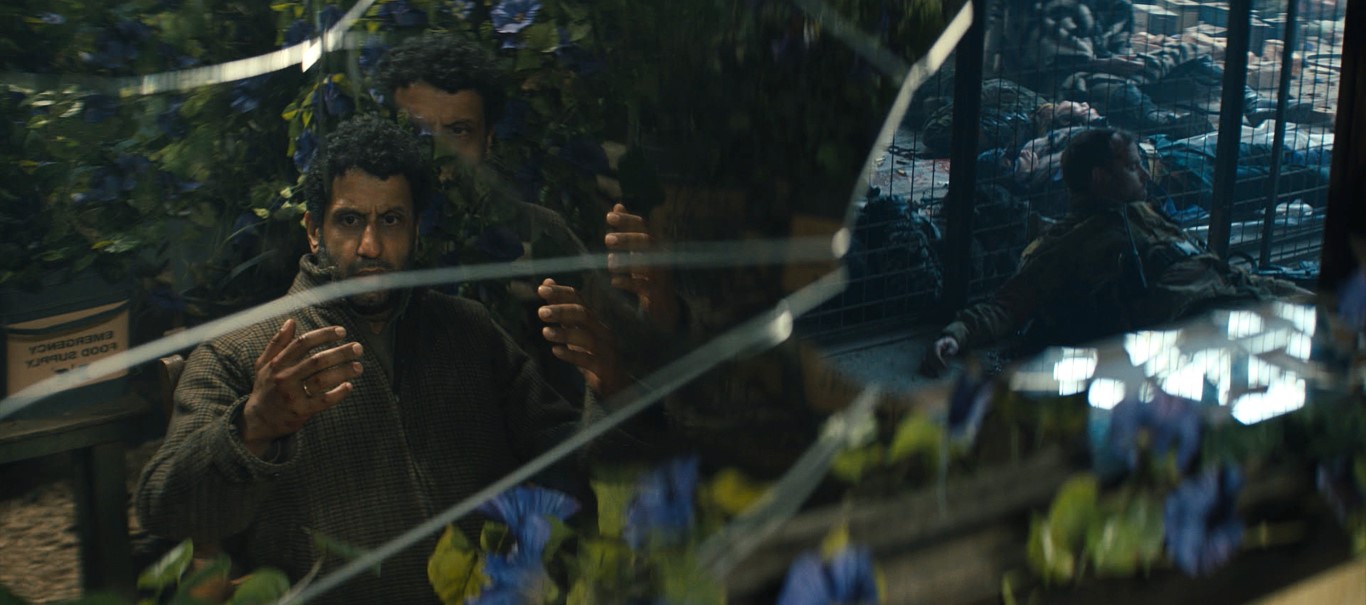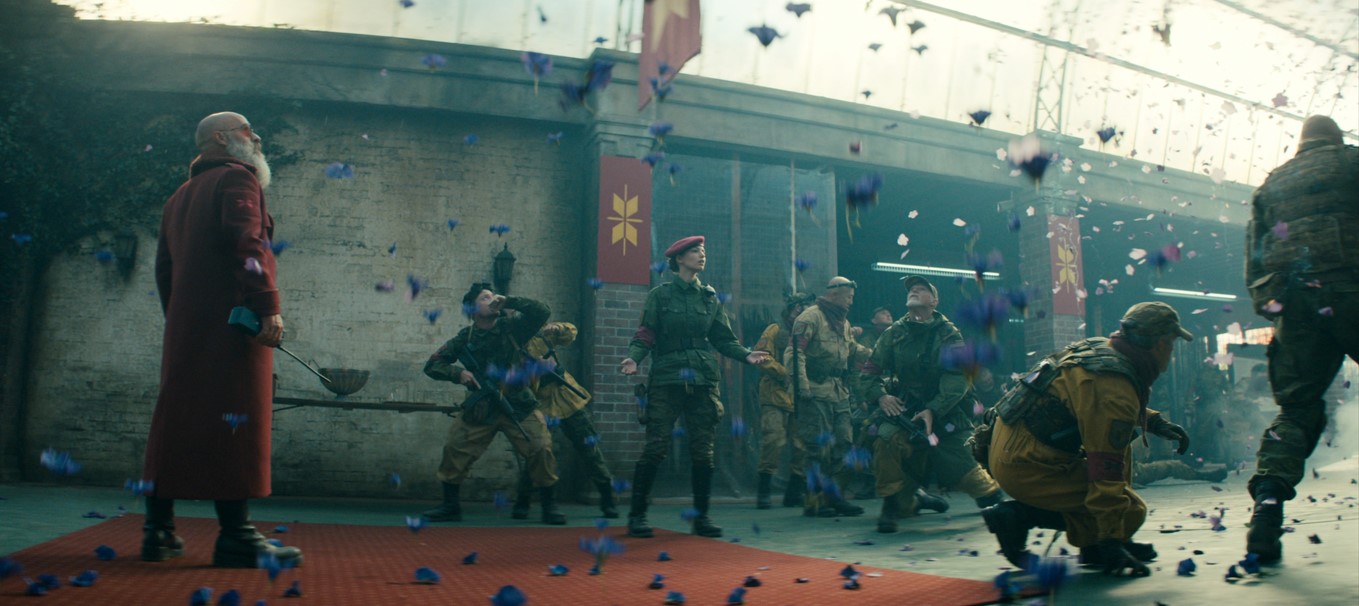Netflix’s ‘Sweet Tooth’ revolves around Gus (Christian Convery), a human-deer hybrid that embarks on a perilous journey to find the woman he believes is his mother after the death of his Pubba. Gus is born in a world that views him with fear and suspicion. The series begins with the advent of a pandemic that kills 98% of the human population. Called the Sick, the pandemic caused the total disintegration of human society, which is referred to as the Great Crumble. Interestingly, the pandemic coincided with the emergence of hybrids like Gus. One fascinating component of the narrative is the vividly purple flowers, often seen around people afflicted with the Sick. Here is everything you need to know about it. SPOILERS AHEAD.
Origin and Significance of the Purple Flowers
As many of you may know, ‘Sweet Tooth’ is based on the comic book series of the same name by Jeff Lemire. There, the purple flowers don’t make an appearance. However, it’s possible that the flowers are a reference to ‘Trillium,’ another comic book series by Lemire, though the flowers in this comic are white in color.
The flowers are one of the most enigmatic aspects of the Sick, and it’s quite possible we still don’t know much about them. As mentioned above, they grow around people afflicted with the Sick. So, it’s likely that their sudden appearance has something to do with H5G9, the virus that causes the Sick in humans. In season 2, we get at least the modern origin of the virus and the hybrids. It all began at Fort Smith Labs in Goss Grove, Colorado. The woman who ran the facility before Armageddon, Gillian Washington, was interested in finding a way for humans to age without any disease. Her great-grandfather, Dr. James Thacker of the United Kingdom, suffered from a muscular degenerative disorder that has plagued every member of the family, including Gillian. Thacker organized an expedition to the Arctic in 1911 after hearing about a village where any form of the disease was non-existent, and people lived way past hundred. Neither he nor any member of his crew ever returned.
Gillian made it her life’s mission to succeed where her great-grandfather failed. About a year before the pandemic, she sent a modern expedition to the Arctic, and what the team retrieved from there was injected into several unfertilized eggs. Only two among them developed viable cultures. While one became Genetic Unit System 1 or Gus, a desperate Gillian injected herself with some of what was inside the second egg and became the Patient Zero of the Sick.

As purple flowers are generally associated with the pandemic, they cause much panic among humans, prompting them to immediately cover their faces whenever they are near the said flowers. In season 2, Aimee Eden takes advantage of this by dropping purple flowers made from plastic from a plane, forcing General Abbot and the Last Men to hastily move out of the zoo and giving Aimee and Jepp the opportunity to rescue their hybrid children.
We also learn in season 2 that the pollens of the flowers have hallucinogenic effects on the hybrids. During an experiment, Dr. Aditya Singh puts Gus inside a room filled with purple flowers, triggering a hypnotized state. The idea behind this is that Gus will be able to remember his forgotten memories. And he does. He recalls that he was created at Fort Smith.
At the start of the series, we see Gertrude Miller or Birdie, Gus’ “mother,” finding a ship inside a cave filled with snow and ice. It later becomes clear that the ship belonged to Thacker. She also finds a corpse, clutching a journal. It is safe to presume that this is Thacker himself. He is covered in purple flowers, indicating that he was a victim of the Sick more than a hundred years before the pandemic. Gertrude later finds hoofprints, and Gus has visions and dreams of hoofprints and of someone wearing a deer skull. This seems to imply that at least one hybrid came before Gus. In whatever direction the narrative goes in the third season, we can be sure of one thing: the origin of the purple flowers is undoubtedly connected to that of the virus and the hybrid.


You must be logged in to post a comment.